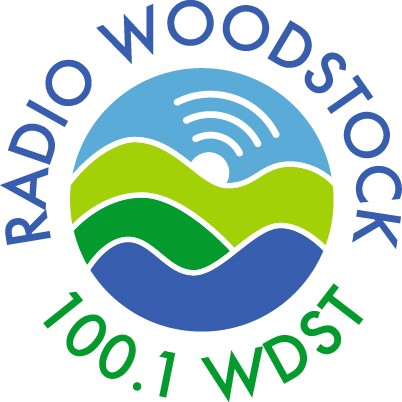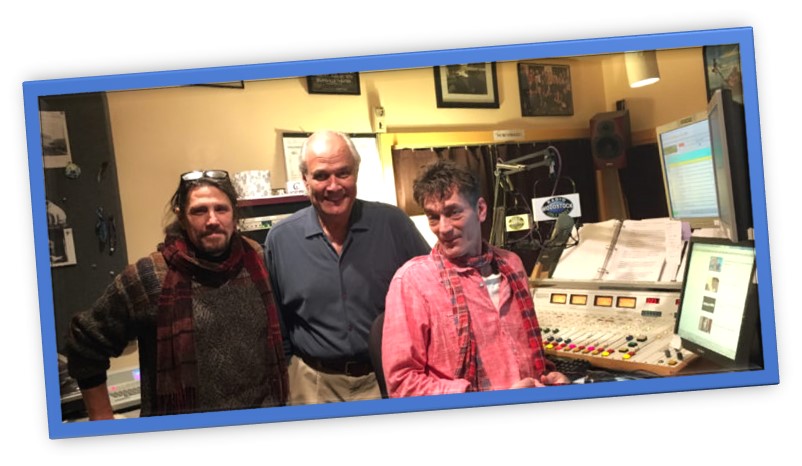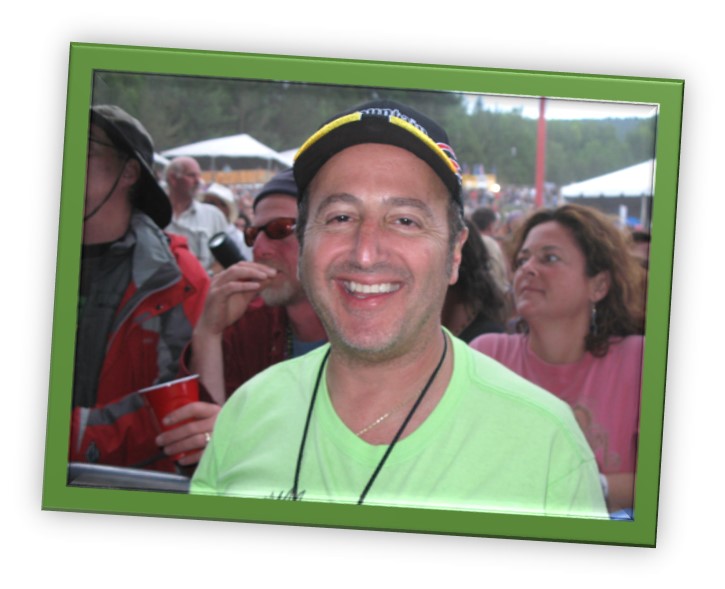
The road for independent broadcasters has always been a challenging one, but never more arduous than it is today. The radio trades often focus on the trials and tribulations of the biggest companies – iHeartMedia, Cumulus, Entercom (and CBS) – while the little guys often fly under the radar. Radio Woodstock is one of those unique stories, and has recently made headlines because of its new monetization model.
I made a visit to the area known as the Hudson River Valley back in 2011, and spent a day with their team. It is “old school” radio as some of you remember it, and it very much lives up to the Woodstock moniker. The library is deep and eclectic, the staff is dedicated and passionate, and the place looks…shall we say, lived in. In short, it’s very much a throwback station in the truest sense of the word, serving a very unique community in a personal way.
Radio Woodstock’s introduction of a new listener-supported hybrid campaign that solicits funding from the audience, as well as allowing the station to reduce its commercial load, is the newest chapter in their 35+ year history, and one that other independent broadcasters are watching carefully.
I recently connected with Richard Fusco, the General Manager of Radio Woodstock and one of its founders. He walked me through the station’s history, and provided details about WDST’s new monetization model. For a commercial station, it is truly very different, and that’s part of what makes WDST our “Radio’s Most Innovative” honoree.
Jacobs Media: What’s the history of Radio Woodstock and what is the format like today?
Richard Fusco: WDST went on the air at noon, April 29, 1980. The first song played was the “William Tell Overture.” When we started, WDST was an eclectic block programmed station with Classical music daily from noon to 3PM. We also programmed Rock, Jazz, Bluegrass, Oldies, Blues, Kids’ programs and talk shows, and a full news department.
As we developed, we decided we needed to have consistent programming during the prime time hours. We programmed those hours with an eclectic mix of Rock, Alternative, Classic Rock and new music, and kept specialty shows to the weekend and evenings. Eventually Classical, Jazz, and Bluegrass were eliminated. Today, WDST plays Classic Rock and new music with cool music shows like Unleashed, The Heavy Light Show, Woodstock Jams, Blues Break, Rock Your Soul hosted by Jerry Wexler’s daughter, and Tool Shed with Paul Green (who started School of Rock and was played by Jack Black in the movie) on the weekends and evenings.

JM: Why the need to introduce a new monetization model?
RF: As an independent station in a market of radio groups, we are at a tremendous disadvantage, especially with ad rates. Groups with multiple stations are low-balling rates for their low rated stations. In the marketplace, we are constantly faced with these low rates. In order to maintain our rates, we needed to provide something for listeners and advertisers that set them apart.
We pulled back our hourly minutes per hour to 10 and our stop sets to a maximum of 2½ minutes. Other stations run 14 to 18 minutes per hour with some stopsets as long as 6 to 8 minutes. Our approach gives listeners a better listening experience and advertisers a better environment for their commercials.
As we all know after 3 minutes of straight ads, the listener is mentally gone or has switched stations. It absolutely makes ads on Radio Woodstock more effective. We are also Nielsen challenged because of an uneven distribution of diaries. We are not planning to renew our deal with Nielsen.
Our deep relationship with our listeners makes us more a friend and trusted source. Getting info about a product or service from a friend or trusted source is the most powerful way to get that info.
JM: In many ways, this is a hybrid model of commercial and public radio – pledge drives and commercials. How did this come about?
RF: It was a total team effort. We wanted to deepen the relationship with our listeners and a strong sense of community. We felt that having them support us financially would do that. We also wanted to develop another revenue stream. Eventually, hopefully, we will even be able to be more discriminating in the ads we accept.

JM: What role does event marketing and festivals play in the Radio Woodstock mix?
RF: We produce festivals, concerts, and events such as our craft beer festival. They provide revenue as well as an opportunity to interact directly with our audience and reinforce who we are.
JM: What’s the state of indie radio, and do you expect that similar stations will follow your lead?
RF: Indie radio has its challenges, but I think it is in a great position. Corporate radio is so homogenized. A Classic Rock station in Cleveland sounds pretty much the same as the classic rocker in Dallas or New York or Kansas City.
Most indie stations are unique, both in their programming and presentation. There is definitely a trend toward a deeper relationship with your radio station. You don’t get that from corporate radio. I expect other indie stations will try this. We, of course, have a very special brand that by its nature stimulates a community spirit.
JM: In an era of “fail fast,” what the timetable? How have the initial fund-raising efforts gone?
Our first fund drive was a big success. We drew over 300 supporters at $100.1. We plan on doing another one later in the year. Two a year is the plan right now.
JM: We live in an era where people are becoming used to paying for entertainment – Netflix, satellite radio, Spotify, etc. Is this where Radio Woodstock is headed?
RF: Yes, but with this caveat. Local businesses are definitely part of the local community spirit we want to foster. This is especially true for businesses who are compatible with our Woodstock brand. We want to keep them part of the mix, both on-the-air and with our digital assets and as a revenue source.
JM: How does Radio Woodstock connect with this audience?
RF: Radio Woodstock has worked hard at building a deeper relationship with our listeners and a strong sense of community. This is part of a strategy that started last summer with our summer tour.
We went to 14 different towns in 14 days, broadcasting live from different locations in each town. It was a huge success. People loved it. The towns loved it. The locations we broadcast from loved it. It solidified our identity as a local Hudson Valley station.
Next, we lowered our minutes per hour and shortened our stop sets. Our DJs remind listeners continually that “We’ll be back in two minutes” or 90 seconds or whatever the length of the stopset. This constantly reinforces what we are doing.
Our social media is strong with over 40,000 active Facebook fans and high engagement. It is a very important part of our Radio Woodstock community.
JM: When I visited you, we talked about branded merch. Where did that end up?
RF: We are developing a Radio Woodstock merch line and eCommerce store with a variety of Woodstock related products and services. We will be doing more concerts this year and special live broadcasts from our Utopia Soundstage. Our supporters get discounts in our store and first shot at concert tickets and attending live broadcasts and events.
JM: Is the $100.1 a one-time contribution or an annual donation suggestion?
RF: Obviously $100.1 relates to our frequency. We give our supporters the option of paying in a lump sum of $100.1 or $8.35 per month. They are welcome to contribute again at our second fund drive. We plan on having two per year.
JM: What advice would give to other indie stations and would-be innovators in the radio space?
RF: Define your brand and continually reinforce it. Develop a strong sense community and a deep emotional bond with our listeners. Engage and interact with them as often as possible with social media and live events.
Be discriminating when you can be with what advertisers you put on the air, especially ones that are not aligned with your brand or whose ads are out of character with your on-air presentation sound. Make sure you have all the businesses that fit your brand on the air. Have a strong local presence.
Live, local, and independent.
This video captures the spirit of Radio Woodstock:
INNOVATION QUOTE OF THE WEEK:
“Set up a situation that presents you with something slightly beyond your reach.”
Brian Eno
More of Radio’s Most Innovative
- Radio’s Most Innovative: Horizon Media & “Moodstates”
- Radio’s Most Innovative: Radio Everyone
- Radio’s Most Innovative: Jim Fox and KKDO’s "Like/Dislike"
- Radio’s Most Innovative: Dan Vallie, National Radio Talent System, Part 2
- Radio’s Most Innovative: Zach Sang, Part 2
- A 2020 Lesson?It Could All Be Gone In A Flash - April 24, 2025
- How AI Can Give Radio Personalities More…PERSONALITY - April 23, 2025
- Can Radio Afford To Miss The Short Videos Boat? - April 22, 2025





Great interview Fred.
I wrote about this type of future for Mass Media in my blog on March 12, 2017.
Here’s a link: https://dicktaylorblog.com/2017/03/12/the-end-of-mass-media/
Thanks, Dick.
Jimmy Buff strikes again ! ( know him from back in the old classic krock days ) Yeah , I was really interested in how they were doing this model because I think Local radio needs this … Question though, how are they measuring their ad rates ? are they just taking the low balled number in the market and using it as their number ? and making it up in other ways? concerts, and non traditional revenue events ?
Great sounding station that really does tap into the music lover that wouldn’t mind paying for good content .
See you at WWRS in LA…
Best-
Frank Canale
Frank, I would hope Radio Woodstock is valuing their limited inventory, but I certainly know it’s not easy to maintain rate integrity in this challenging environment. Thanks for the note & see you in L.A.
Frank, I’ll tell Jimmy you said hi. With the large radio groups’ low-ball strategy in full force in our market as well as around the country, we manage to maintain our high rates by selling our unique station and programming and the quality of our listener experience and effective advertising environment both due to our reduced ad minutes per hour and short stop sets.
We also use our Facebook numbers, the highest in the market even against the powerhouse stations, to show our deep listener involvement and their emotion bond with us. This goes a long way to show local businesses the value of our station and our high rates.
And of course the fact that 300 of our listeners were willing to ante up $100.10, also shows advertisers our listeners are loyal. This all translates to more effective advertising
on Radio Woodstock.
Richard Fusco Radio Woodstock GM
Fantastic interview! I smiled through ever sentence.
Can you imagine calling up an advertiser, only inform them that their spot does not fit “the brand” of your station and are unable to air it? From day one, I’d be waiting every day to make that call for the very first time. A great opportunity to teach them why.
To help salvage the possible loss of income, do they offer an in house creative department that whip up campaigns for local clients? That opens up doors for many NTR pathways. For example, charge them for creative! The station can evolve into a mini ad agency for local clients who understand the power of well written and produced spots. The station has a vested interest to get the clients results, more so than any other station in the market. To have that opportunity to teach this craft to advertisers with small budgets can do great things for the entire radio community. If spots sound great, the chances of people listening longer through a 6 minute stop set is increased, not to mention the results you provide the advertiser. The word gets out fast, especially if you are a sub par ad agency that can’t create spots and a brand like you do. 🙂
Very inspirational!
I’m sure they’ll see this, VIctor. Glad you stumbled upon this post. The Radio Woodstock folks are a passionate, committed team. You are right about the advertising and marketing focus – something they can do better than other media outlets in their area. Thanks for the comment.
Thanks for the story, Fred. Good stuff!